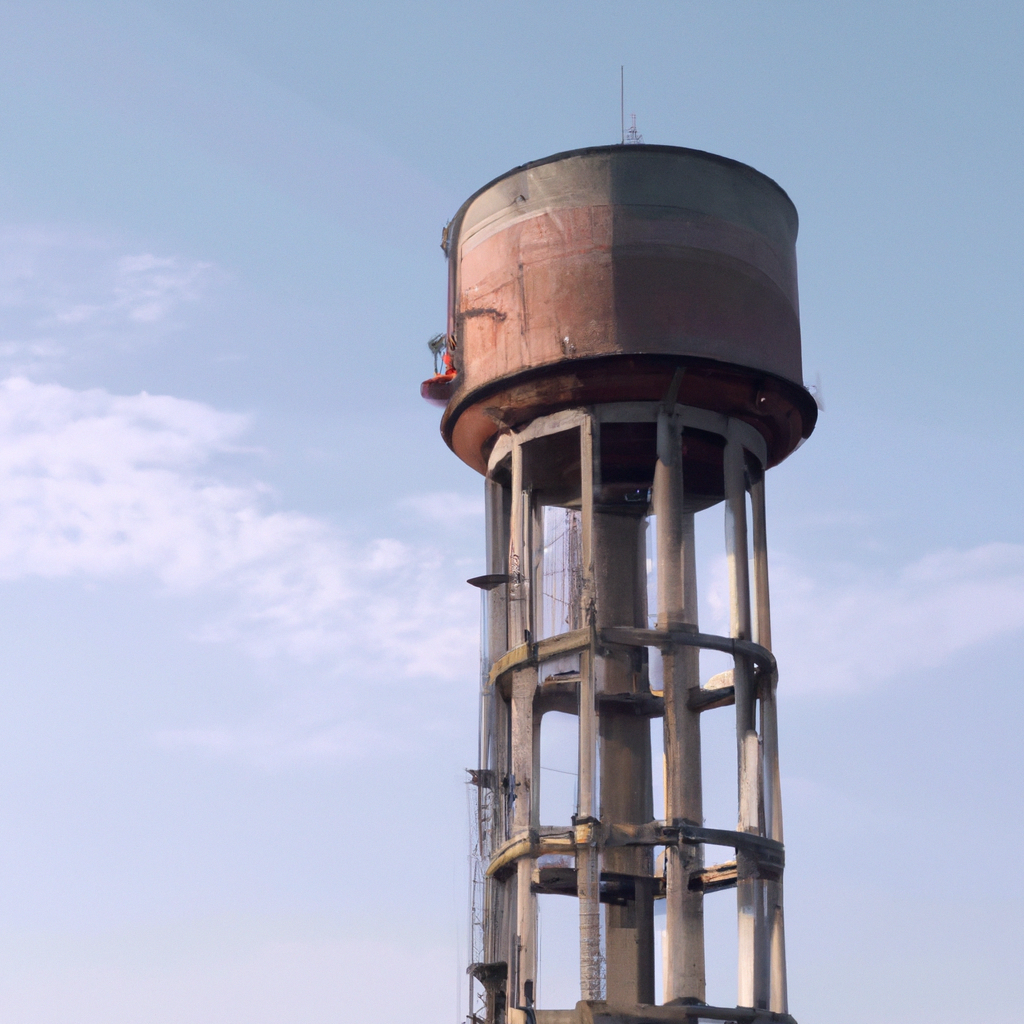Water towers are an integral part of the municipal water supply system. They are responsible for storing and distributing water to communities, ensuring that there is always a reliable source of clean drinking water. In this article, we will explore how water towers work, their importance in water management, and the different types of water towers in use today.
How do water towers work?
Water towers work on a very simple principle: gravity. Water is pumped into the tower, which is usually a tall, cylindrical or spherical structure made of steel or concrete. The height of the tower ensures that there is enough pressure to distribute water to the surrounding communities. The water is stored in the tower until it is needed, at which point it is distributed through a network of pipes that carry it to homes, businesses, and other buildings.
The water tower is connected to the municipal water supply system through a large pipe that brings water into the tower. A smaller pipe, known as a feeder pipe, is used to distribute water out of the tower and into the distribution system. The feeder pipe is located near the bottom of the tower, where the water pressure is greatest. As water is distributed from the tower, the water level drops, and the pressure decreases. When the water level reaches a certain point, a pump is activated, and water is pumped back into the tower until the desired water level is reached.
Types of water towers
There are several types of water towers in use today, each with its own advantages and disadvantages. Some of the most common types include:
1. Pedestal water towers: These are the most common type of water tower and are typically found in urban areas. They are tall, cylindrical structures that are supported by a single pedestal. They are generally made of steel or concrete and can hold thousands of gallons of water.
2. Elevated water towers: These are similar to pedestal water towers but are supported by a series of legs or a lattice structure. They are often used in areas where there is limited space for a pedestal tower.
3. Ground-level water tanks: These are large, underground tanks that are used to store water. They are typically used in areas where there is limited space for an above-ground tower.
4. Composite water towers: These are a combination of pedestal and ground-level water towers. They are designed to provide the benefits of both types of towers and are often used in areas where there are space constraints.
The importance of water towers in water management
Water towers play a crucial role in water management. They are responsible for storing and distributing water to communities, ensuring that there is always a reliable source of clean drinking water. They also help to regulate water pressure, which can be critical in preventing water main breaks and other issues.
Water towers also play an important role in emergency management. In the event of a disaster or other emergency, water towers can provide a source of water for first responders and other essential personnel. They can also be used to provide water to communities that have lost access to their regular water supply.
Conclusion
Water towers are an essential part of the municipal water supply system. They are responsible for storing and distributing water to communities, ensuring that there is always a reliable source of clean drinking water. There are several types of water towers in use today, each with its own advantages and disadvantages. Regardless of the type of water tower used, they play a crucial role in water management and emergency response.







